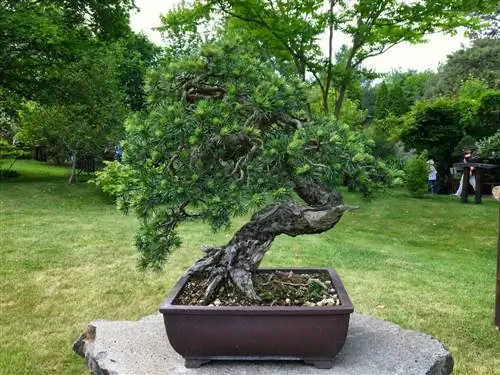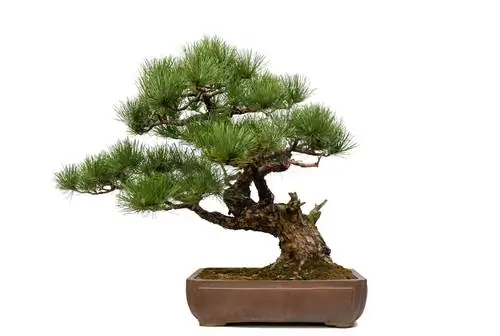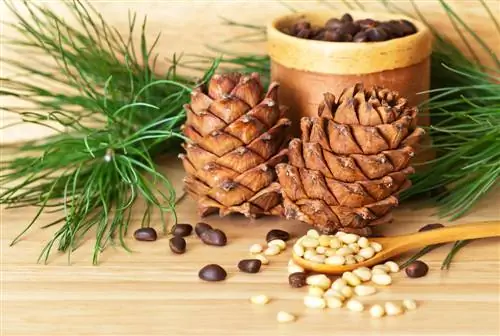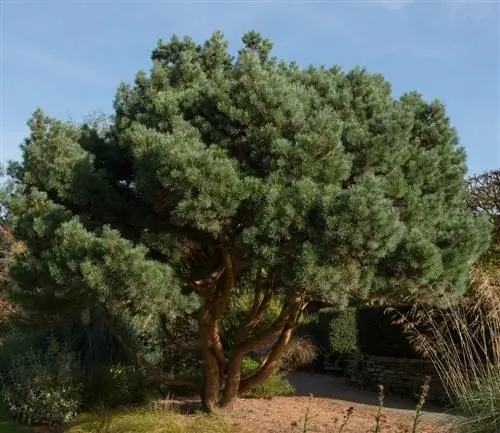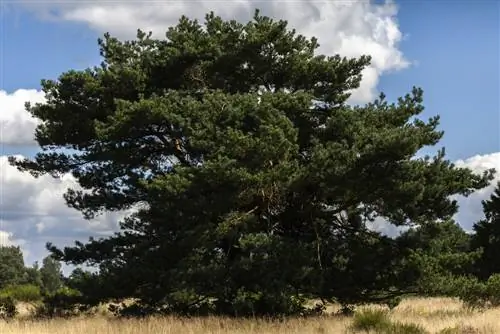- Author admin [email protected].
- Public 2023-12-16 16:46.
- Last modified 2025-01-23 11:21.
When you talk about the Scots pine, you probably have a tall forest tree in mind. But can you imagine the coniferous tree growing at a low height as an ornament on your balcony or terrace? In bonsai form, the Scots pine impresses you and certainly neighbors and visitors. Give it a try! To ensure that you have success with cultivation, the following article will give you valuable tips on care.
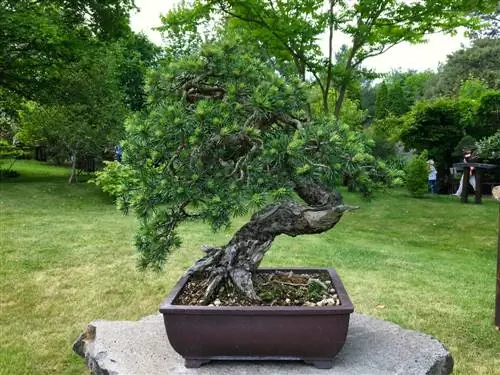
How do I care for a Scots pine bonsai?
A Scots pine bonsai should be placed in a sunny location and kept moist throughout. Important care aspects include regular cutting, fertilization from May to August, repotting every two years and frost-free overwintering.
Suitable pine varieties
Many Scots pines have twisted, very short needles, which are particularly effective in bonsai form. Basically, you can use any subspecies of Scots pine. However, we particularly recommend:
- the Scots pine (length of the needles: 3.5 cm)
- the Engadine Scots pine (length of the needles: 2.5-3 cm)
- the bog forest pine (length of the needles: 2.5 cm)
Advantages and disadvantages of Scots pine in bonsai form
Many conifers are often kept as bonsai. This form of cultivation is a little more laborious with the Scots pine, but it is definitely worth it.
Advantages
- dense growth thanks to short needles
- bicolor trunk
- Almost all design forms conceivable
- very flexible branches, even in old age, that can be easily wired
Disadvantages
- some subspecies lose their needles quickly
- the varieties mentioned above are not available everywhere
Care tips
Location
It is best to place your Scots pine in a sunny location. If there is too little light, the tree will form longer needles.
Watering and fertilizing
Keep the substrate moist throughout. Drainage protects against waterlogging and the associated death of the roots. To prevent sprouting, you should only water sparingly in the spring. Mix the substrate from akadama and humus in a ratio of 2:1. Fertilizer is applied from May to August with organic ball fertilizer (€9.00 on Amazon).
Cutting
Before the beginning of summer, shorten the candles. New buds will soon form here. From the point at which the new shoots become woody, cut them back by a third. You can wire the jaws to support this. To prevent the tree from being damaged, you should cover the wire with raffia.
Repotting
Every two years you should repot your Scots pine and carry out a root cut.
Wintering
Your bonsai pine must not get any frost. Overwinter the plant on the windowsill.

